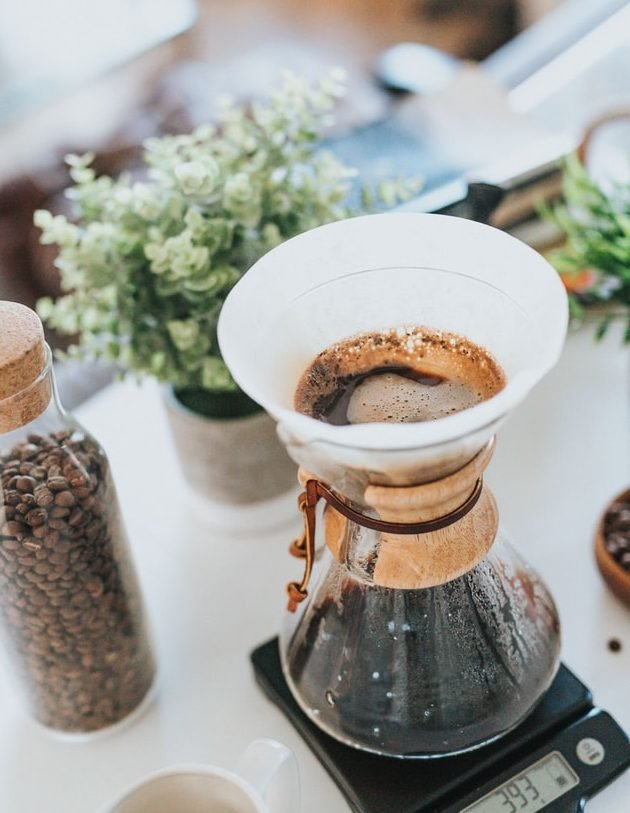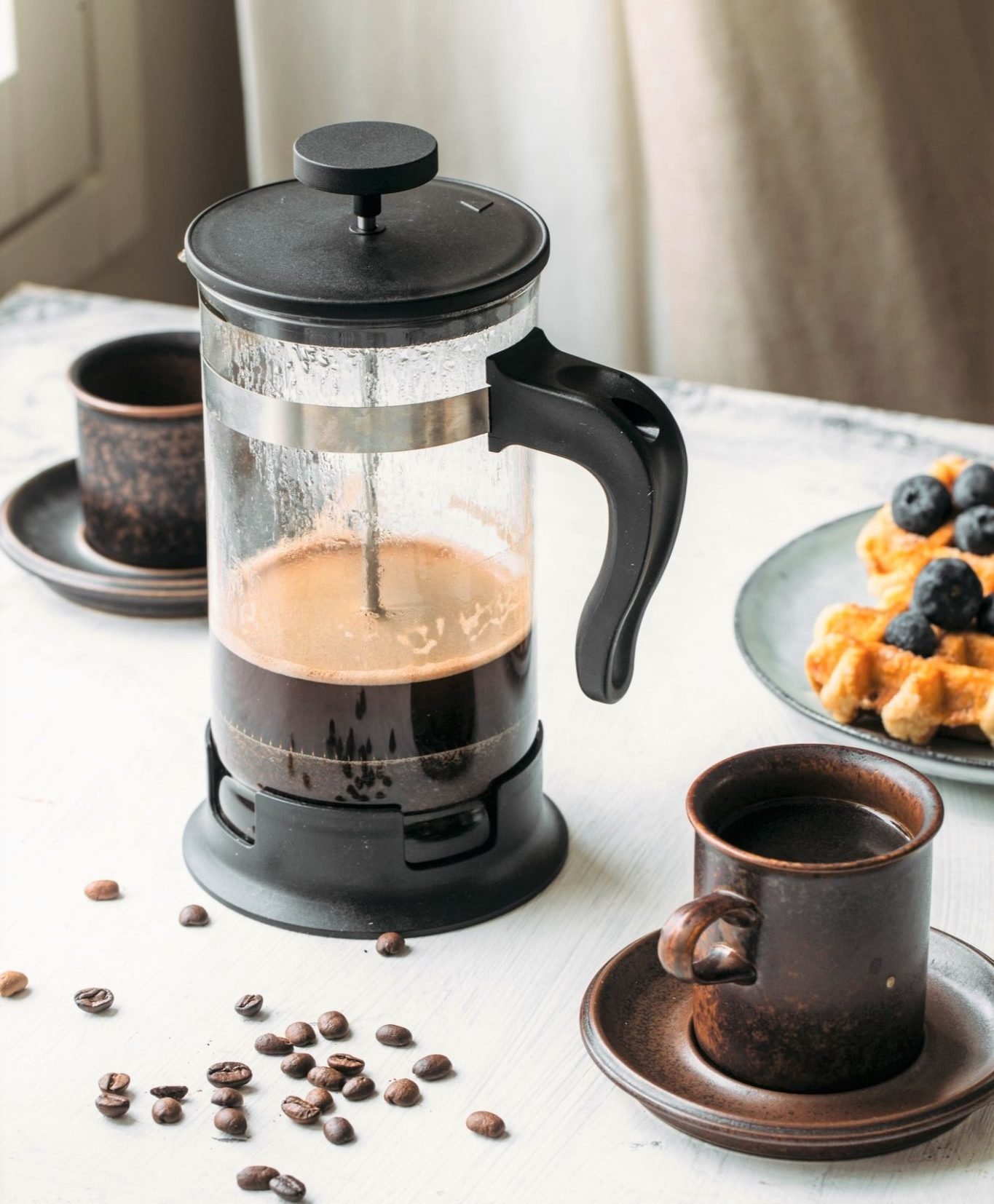Typically, there are three standard processes for brewing coffee, by gravity fed percolation, full immersion or with a pressurised system. All work very well with speciality coffees and each of these processes have their own special ways of creating a satisfyingly good coffee brew. There is no right or wrong, or better or worse, every coffee drinker will have their favourite, the one they rely on, the tried and tested, the one they are confident will make that excellent tasting cup of coffee.
Selecting a Brew Process
Whilst there are many different methods to brew a coffee, each one will still employ one of three basic processes as mentioned above. Choosing the best way to brew coffee is really down to your personal taste, but bear in mind, each process has some characteristics that make it better suited to brewing a specific style of coffee.

Gravity Fed Percolation
Typically Chemex, V60 or Kalita
The word percolation refers to a liquid using gravity to pass through a porous material. This is literally what happens, water moves through and around the coffee grounds, extracting the different flavours, passing through the filter paper and into your container below. This method is often thought of as the ‘standard’ way to make a filter coffee, especially in the home as it’s easy to do, and when done correctly makes an excellent brew. It is now increasingly being seen in the Speciality Coffee market with many coffee bars using a pour over system or a premium Batch Brew machine enabling them to add filter coffee to their menu.
We recommend lighter bodied, citrus and floral acidic coffees with this method such as the Kenyan AA or the Costa Rica (Coope Dota Hermosa).
TIP
One brewing tip that will help – always add enough water to allow the coffee to bloom. This will promote an even extraction and increase the pleasant flavours and notes coming through into your cup. We recommend 18g of coffee per 300ml of water, ground at 8.5 on a Mahlkonig EK43 coffee grinder. Pour the water over three 100ml stages and stir the coffee three times during the second stage to agitate the grounds.

Full Immersion
Typically French Press, Cafetière or AeroPress
With full immersion brewing, the ground coffee and water are in contact with each other for the full duration of the brew process. This means the brewer needs to focus on the brew time of the coffee, rather than controlling the pour. The Full Immersion method puts more emphasis on the pressure so that more flavour can be extracted and the bitterness can be reduced, resulting in fuller and more rounder brew.
We recommend full-immersion for heavier-bodied coffees such as the Brazilian Peaberry or the Columbia Palermo.
TIP
Two brewing tips that will help – ensure the coffee bed is flat and even and let boiling water cool down for 30 seconds to a minute before pouring into your container. We recommend 13g of coffee per 200ml of water, ground at 5.5 on a Mahlkonig EK43 coffee grinder.
Pressurised Brewing
Typically Traditional Espresso Machine
Pressure is the most important element here, and you need lots of it, 9bar will work well. This is required to force the water through the compacted coffee grounds, extracting all the wonderful flavours and creating a great ‘Espresso’. As high pressure extracts flavour faster, a double espresso shot should take about 30 seconds. This type of brewing works for any type of coffee, however, intensity of flavour can drastically change (e.g. the acidity) when comparing the same coffee using a drip brew method above.
We recommend it’s worth exploring different coffees to find the one that works for you, but we know two that are excellent, the Guatamala and Indonesian Sumatra Single Origin Coffees make a perfect Latte or Flat White. Why not give them a try by Requesting a Sample from our team.
TIP
Two important brewing tips that will make a difference – ensure your grinder is setup correctly and try and achieve a consistent pressure when tamping the coffee into the group handle. This allows for the water to pass through at the correct rate and extract the best flavours. We recommend producing a 36g espresso, using 18g of coffee extracting over 30 seconds. To find out more, it’s always worth considering taking part in a training programme or a Coffee School to take your coffee expertise to the next level.
Coffee Flavour
Whilst the myriads of flavours that we can taste in coffee are created by the altitude and conditions it is grown in, these can all be influenced and changed by the following elements that we all have control of:
- Water to Coffee Ratio
- Grind Size
- Extraction Pressure
- Brew Time
- Water Temperature
- Water Quality
- Brew Turbulence
- Coffee Storage
- Machine Condition
We’ll go into more detail on each of these in future blog posts so keep a look out!

